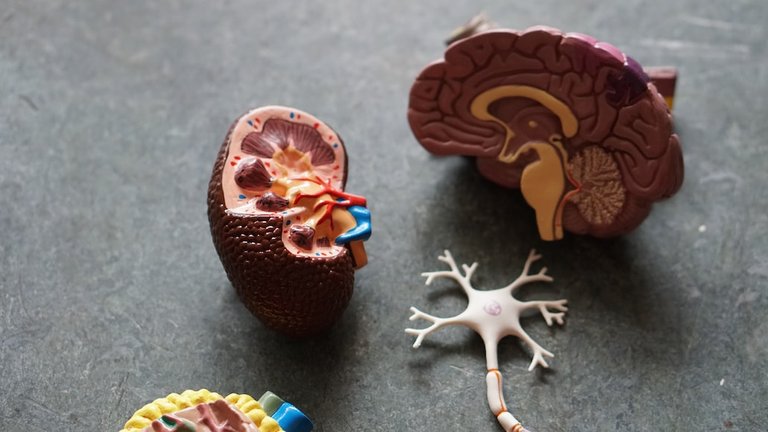The Wonders Of Brain Cells: Our Neurons and it's Scientific Study History... Part 1
One of the things that has so fascinated me in the world of scientific study is our brain cells - Neurons. In an analogous way, the neurons of our brain are like billions of speakers, endlessly prattling and chattering to one another. But the more fascinating thing is, each of them has only one word with which to tell its story, the one and only word it can speak. The only option it has is whether to speak that word or keep silent, and whether to speak it more often or not.

When you pay attention to just one neuron (brain cells) you might probably think it's an imbecile with a one-word vocabulary, babbling and being babbled at. But when it's looked at as a whole, then the gibbering of all the other neurons together becomes in a way harmonious.
The key lies in putting together the individual messages and how the different parts work together. The fascinating question asked in psychology and neuroscience is not just about how a neuron says its word, but rather how it communicates with others and how it listens.
https://youtube.com/shorts/Rvmvt7gscIM?si=NikejmT2z6DAphHt
For us to study about the interactions that takes place amongst different neurons in the brain, scientists began with the simplest illustration of such interactions- the reflex. Descartes a French scientist, philosopher and mathematician pointed out that some
of our actions are automatically controlled by mechanical principles rather than by our "will power".
Yep!
Neuropsychology advanced further when researchers observed the continued movement in animals even after their brains were removed. A classical example is a beheaded chicken still running around a barnyard.
Now, somewhere in 1750, A scottish physician Whytt demonstrated that these movements are controlled by the spinal cord. For instance, a frog with its head removed would react by jerking its leg away from a pinprick, indicating that this movement was not controlled by the decapitated head, but dependent on the spinal cord.
Then the exploration of reflexes got an even further boost when Pierre Cabanis during the French Revolution, pondered whether consciousness remains after beheading.
Obviously:
He came to the conclusion that consciousness doesn't persist, and the body's movements after execution are just reflex actions. In other wordsautomatic responses without awareness.
A couple of years later, another German scientist Theodor Bischoff revisited this unsettling topic. He conducted a somewhat gruesome experiments on a recently cut of head of an executed criminal. Surprisingly, even quite strong stimuli didn't produce any responses in the initial minute after decapitation. These experiments conducted by Bischoff was done with perhaps greater devotion to science than human sensitivity.
Anyways, today, we can identify many reflexes, which are automatic responses that happen without thinking or control (will power). Examples include vomiting, the rhythmic squeezing of the intestines (peristalsis), penis erection, blushing, pulling limbs away from pain, and newborns sucking. Ofcourse there are many more examples in this catalog of reflexes for me to list them all out here.
But can we organize these reflexes in a logical way?
There are a few things we can consider. We can first look at how many steps are in the reflex arc, which is the path from the trigger to the response. Some reflexes have only two parts, like when a sensing neuron connects directly to a moving neuron. Usually, the chain is longer, with interneurons between the sensing and moving parts. We can also check if the reflex involves the brain (and if it does, which part) or the spinal cord.
When thinking about spinal reflexes, we can separate them into two types: flexion and extension. Flexion reflexes usually happen when you withdraw, like pulling your arm away from a hot fire. Extension reflexes are more about keeping your body upright against gravity. If you press on the soles of your feet, it triggers the extensors, making your leg straighten up.

Bus Stops Here for Today:
In part one of this blog-isode, we've learned that despite our previous discussions focusing on the Cerebral Cortex as the C.E.O, we now recognize the complexity of the human or animal organ system. There are other parts or organs that play significant roles in this intricate system. The spinal cord, I would say, plays a more supervisory role by managing reflexes and relaying messages between the body and the C.E.O, the brain.
More on Neurons is coming in tomorrow's blog-isode. I hope to see you there. But before you leave, I'd appreciate hearing your thoughts on this blog or any suggestions for improvement. I enjoy creating content, and I want to ensure you enjoy reading it. Until tomorrow, stay safe.
References and links:
https://byjus.com/biology/reflex-action/
In the university my favorite course was neuroanatomy and i was always fascinated by the many wonderful things that i learned along the way, the wonders of the brain cells are truly fascinating indeed
Wow, I'm glad I was able to remind you of something fascinating you your college days. Thanks so much for reading and leaving a comment.
Thanks for your contribution to the STEMsocial community. Feel free to join us on discord to get to know the rest of us!
Please consider delegating to the @stemsocial account (85% of the curation rewards are returned).
Thanks for including @stemsocial as a beneficiary, which gives you stronger support.
Congratulations @serenecounsel! You have completed the following achievement on the Hive blockchain And have been rewarded with New badge(s)
Your next target is to reach 2250 upvotes.
You can view your badges on your board and compare yourself to others in the Ranking
If you no longer want to receive notifications, reply to this comment with the word
STOP